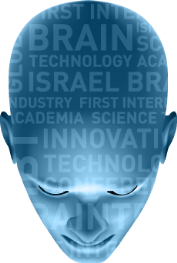BrainTech: Six Take-aways on Neuroplasticity and Cognitive training
 Israel’s first international BrainTech conference took place this week, on October 14 and 15th. It was organized by Israel Brain Technologies (IBT), a non-profit organization whose mission is to position Israel as a global brain technology and research center. The conference included talks representing multiple stakeholders in the neurotechnology sector worldwide – patients, clinicians, academic leaders, public officials, entrepreneurs and industry executives. An important session in the conference was the BrainBlitz — a roundtable session where different brain technology topics were discussed in smaller interest groups.
Israel’s first international BrainTech conference took place this week, on October 14 and 15th. It was organized by Israel Brain Technologies (IBT), a non-profit organization whose mission is to position Israel as a global brain technology and research center. The conference included talks representing multiple stakeholders in the neurotechnology sector worldwide – patients, clinicians, academic leaders, public officials, entrepreneurs and industry executives. An important session in the conference was the BrainBlitz — a roundtable session where different brain technology topics were discussed in smaller interest groups.
Our table, devoted to Neuroplasticity and Cognitive training, was moderated by Prof. Hillik Levkovitz, head of daycare department and of the lab for research of emotions and cognition at Shalvata Mental Health Center, and by myself, as a neuroscientist and entrepreneur. It included a very heterogeneous group of people — molecular biologists, cognitive training entrepreneurs, clinicians (neurology, psychiatry), therapists (OT, speech), and some people with cognitive impairment. Here are some of the main take-aways from the rich discussion:
- Motivation seems to be critical in any form of neuroplasticity-based therapy. Motivation as a driver of repeated and intensive practice as well as motivation and reward as enhancers and modulators of neuroplasticity processes. In particular, in rehabilitation cases where motivational processes are impaired, treating and training motivational circuits may be the first priority as a gateway to training of other functions. The engaging and even addictive power of computer/video games was mentioned as potentially beneficial driver of motivation for cognitive training.
- Brain plasticity may go both ways, thus cognitive training can even be detrimental if it is not designed and performed correctly. Therefore people developing and using cognitive methods should be cautious and keep assessing the effect of their protocols on a regular basis, and make sure that cognitive training is personally adapted on a dynamics level.
- There are significant gaps in the “supply chain” process of translating scientific findings into valuable solutions, especially regarding clinically validated cognitive training. We still see many challenges in transforming research into clinical methods, and in making sure clinical therapies translate into real-life improvements. The example of schizophrenia was discussed in depth, highlighting the difficulty to transfer psychotherapy, occupational therapy and cognitive training benefits into improvement in daily life.
- We see potential value in new media/ gaming for enhancing transfer of training into real-life. Technologies such as 3D motion sensors that enable natural interaction (Primesense/Kincet), affordable VR solutions, and augmented reality solutions (Google Glass), can help upgrade cognitive training by making it more similar to real-life form of interaction and environmental context.
- Rehabilitation processes that involve recruitment of new brain areas may benefit in the future from the possibility of implanting cortex tissue and rewiring it by training it to implement impaired/new cognitive functions.
- Finally, it is important to start defining guidelines for ethical issues, such as affordability and access to cognitive training by some populations and not others.
 – Dr. Son Preminger is the founder and CEO of Intendu Ltd. a cognitive training startup. She also holds an Assistant Professor position at the Psychology school at the Interdisciplinary Center (IDC) Herzliya.
– Dr. Son Preminger is the founder and CEO of Intendu Ltd. a cognitive training startup. She also holds an Assistant Professor position at the Psychology school at the Interdisciplinary Center (IDC) Herzliya.


